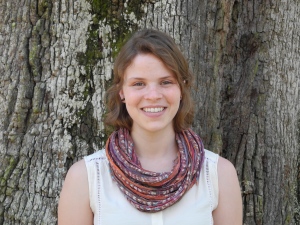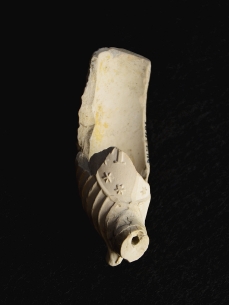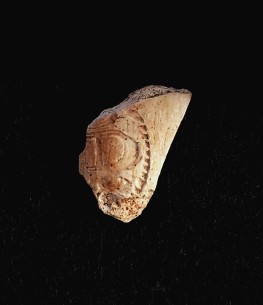#drayton hall
From the Drayton Hall Collections: Elizabeth Bull Drayton’s Mourning Pendant

by Sarah Stroud Clarke, Archaeologist & Curator of Collections The Drayton Hall collections span centuries and generations of Drayton family members. This month we are highlighting an object that is related to the John Drayton (1715-1779) family through marriage. Pictured below is the front (left) and reverse (right) of a mourning pendant honoring Elizabeth Bull Drayton (c.1716-1751). Elizabeth…

by Cameron Moon, Preservation Coordinator, the Drayton Hall Preservation Trust As work begins on the new visitor center, preparations to repurpose the historic caretaker’s house into an interpretive exhibit are underway. While the postbellum period and the 20th century are not periods of primary significance at Drayton Hall, these years were pivotal for the preservation of the property. Phosphate…
“The Past & Future of Drayton Hall”

Carolina Lowcountry and Atlantic World Program Presents The First in the Spring 2017 Wells Fargo Distinguished Lecture Series Wednesday, February 8th, 2017 – College of Charleston — Addlestone 227 — 5:00pm Guest Speaker Carter C. Hudgins, President & CEO, The Drayton Hall Preservation Trust Within studies of American architecture and material culture, Drayton Hall (c.1738) is regarded as an…
by Corey Heyward, Wexler Curatorial Fellow
The two objects seen here are broken fragments of tobacco pipes. Made of kaolin clay, pipes were imported from England and were a common accessory during early America. They easily break and therefore are rarely recovered from archaeological sites in one piece. However, even with the smaller fragments, we can still learn a great deal.
These two examples both exhibit maker’s marks, consisting of the maker’s initials, impressed onto the pipe bowl by the manufacturer. The bowls appear to be stamped and impressed with the initials “TD,” which was a common mark throughout the colonial period and into the 19thcentury.
“TD” likely refers to either Thomas Dormer (1748-1770), who was a pipe maker in London by 1763, or the Bristol pipe maker Thomas Dennis (1734-1781). American-made pipes with the mark “TD” were later manufactured in the 19th century, however we used stem bore measurements, which correspond to production dates, to confirm that at least one of these pipes was made likely around 1720-1750.
 Corey Heyward, the Wexler Curatorial Fellow, first interned in Drayton Hall’s Preservation Department in the fall of 2011 during her sophomore year at the College of Charleston. After completing her junior year abroad at the University of Groningen in the Netherlands, Corey returned to Drayton Hall during her senior year to write her bachelor’s honor essay on the site’s delft tiles. Her in-depth research provided new information about their manufacturing dates and origins, the specific decorative patterns and their possible locations throughout Drayton Hall. Corey completed her M.A. in Anthropology, specializing in Archaeology and Museum Training, at George Washington University. From the beginning of her graduate work in 2014, she also interned in the archaeology laboratory at George Washington’s Mount Vernon where she was trained to use DAACS, assisted in archaeological fieldwork and learned to produce high quality archaeological photographs.
Corey Heyward, the Wexler Curatorial Fellow, first interned in Drayton Hall’s Preservation Department in the fall of 2011 during her sophomore year at the College of Charleston. After completing her junior year abroad at the University of Groningen in the Netherlands, Corey returned to Drayton Hall during her senior year to write her bachelor’s honor essay on the site’s delft tiles. Her in-depth research provided new information about their manufacturing dates and origins, the specific decorative patterns and their possible locations throughout Drayton Hall. Corey completed her M.A. in Anthropology, specializing in Archaeology and Museum Training, at George Washington University. From the beginning of her graduate work in 2014, she also interned in the archaeology laboratory at George Washington’s Mount Vernon where she was trained to use DAACS, assisted in archaeological fieldwork and learned to produce high quality archaeological photographs.
The Wexler Curatorial Fellowship is a two-year, full-time fellowship position to help catalog the Drayton Hall archaeological collection using the Digital Archaeological Archive of Comparative Slavery (DAACS) under the direction of Archaeologist and Curator of Collections, Sarah Stroud Clarke.
What Is It? by Corey Heyward, Wexler Curatorial Fellow The two objects seen here are broken fragments of tobacco pipes.
By Eric Becker,Manager of Landscapes, Horticulture, and Modern Facilities

In 2013, an initiative began to evaluate and produce management plans for the preservation and conservation of some of the historic rice fields and ponds on Drayton Hall property. Historically, rice production was likely occurring here sometime around the end of the 17th century. The use of the fields and ponds for this function continued until the redevelopment of the property by John Drayton in the 1740s. Over the years, maintenance and use of the entire pond system had greatly diminished and the natural environment crept back in, attempting to reclaim a long-lost ecosystem. Unfortunately, this system (shown above) was unhealthy, lacking in good water quality and control, overgrown and breeched impoundments, and infested with invasive aquatic and wetland plants.
Working with Folk Land Management, the Drayton Hall Preservation Trust evaluated and adopted a management plan for this historic system to re-establish the integrity and function of the impoundments; replace, add and increase the water flow capacity, pond depth and holding capacity; reduce and remove invasive plants; add habitat for colonial bird species while increasing the seasonal water surface and food sources for migrating waterfowl; and to better allow access and interpretive potential in the future (Phase II). Work on Phase I began in March of this year and finished in August; it was supported, in part, through funding from the US Fish & Wildlife Service, Ducks Unlimited, the Dominion Foundation and Gail and Parker Gilbert. The results of these partnerships speak for themselves in the images below.
With the challenge of the recent Hurricane Matthew, the system was not only put to the test, but finally provided the necessary water, assisting to refill the ponds. The impoundments held, and although overwhelmed by this major event, the water control systems functioned much better than last year’s more impactful flooding.
Completion of Historic Wetlands Conservation Project (Phase 1) By Eric Becker, Manager of Landscapes, Horticulture, and Modern Facilities In 2013, an initiative began to evaluate and produce management plans for the preservation and conservation of some of the historic rice fields and ponds on Drayton Hall property.
Public Lecture on Digital Restoration: Marrying Tradition & Innovation at #DraytonHall @CofC

Digital Restoration: Marrying Tradition & Innovation at Drayton Hall presented by Trish Lowe Smith Curator of Historic Architectural Resources, Drayton Hall Thursday, September 29 at 7:00 pm College of Charleston Simmons Center for the Arts, Room 309 54 St. Philip Street Free and open to the public. Trish Smith’s latest work includes a 3D rendering of Drayton Hall’s Withdrawing Room with a c.…







